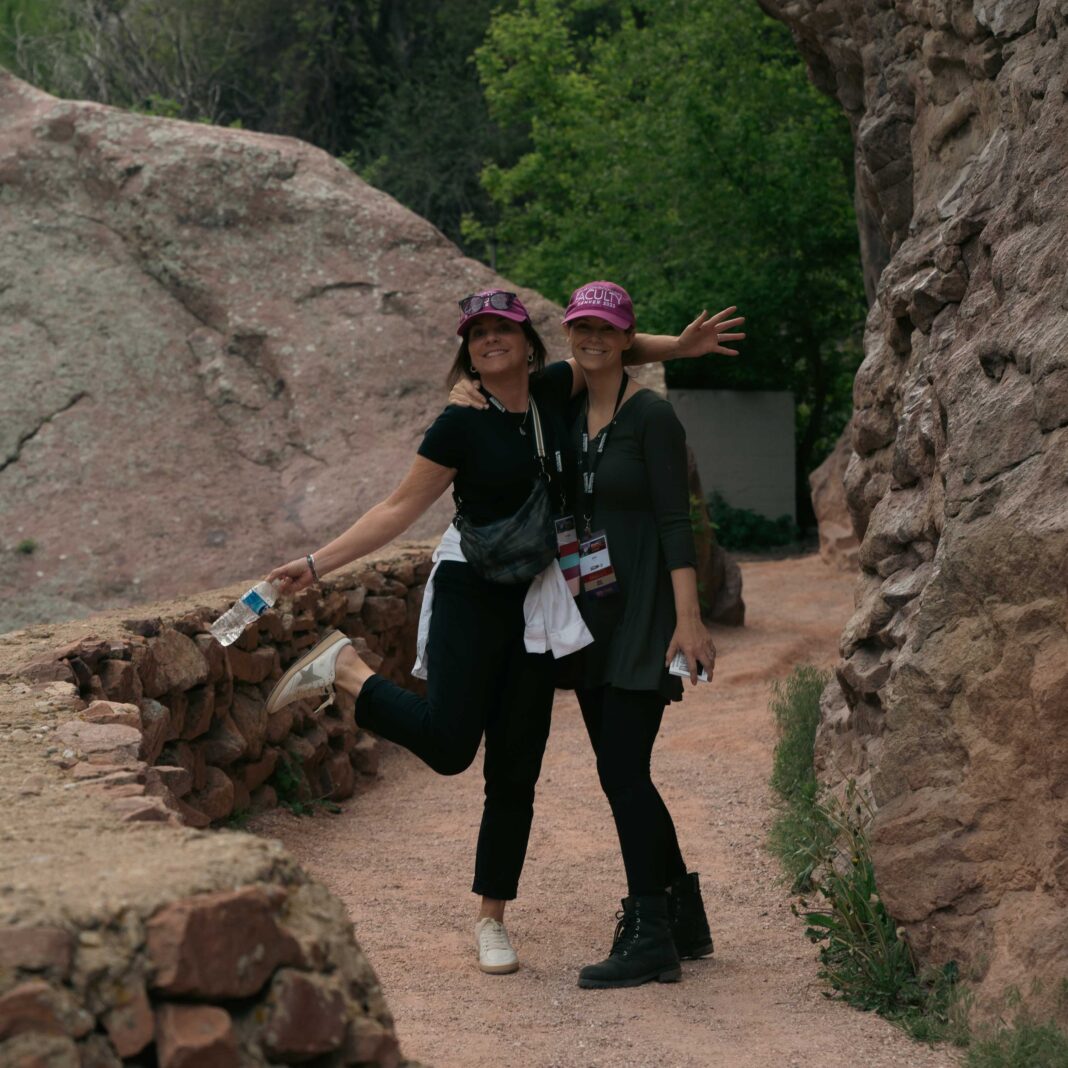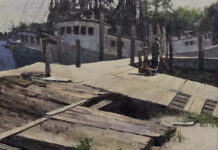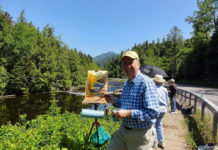We are in full swing at the Plein Air Convention! On Day 3 of PACE our group headed into the Eldorado Canyon State Park, the home of mule deer and elk, as well as the Douglas fir forest and Ponderosa pines. As you can imagine, painters had plenty of options in regard to scenery for their canvas.
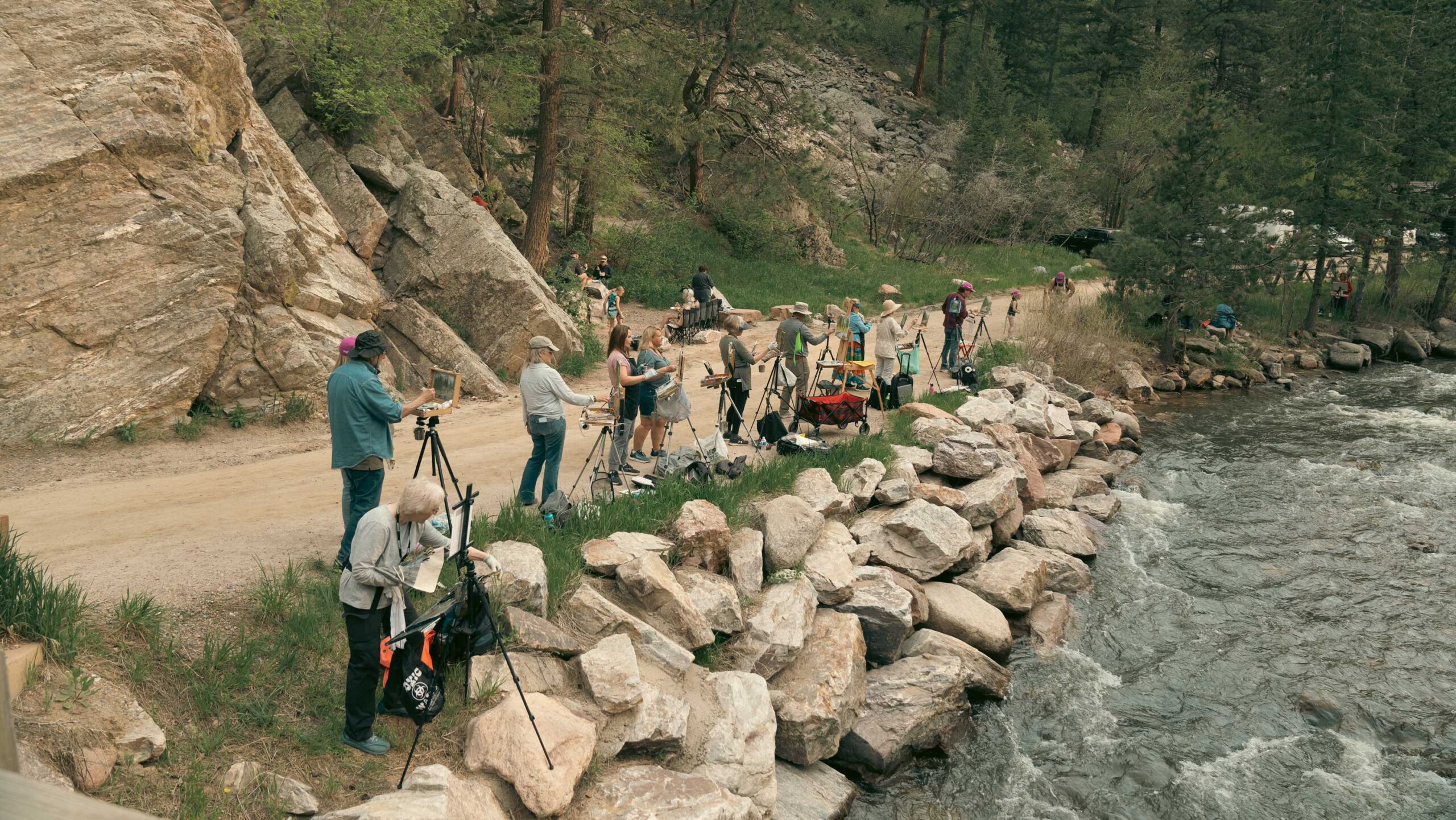
Earlier in the day and inside the convention center, we saw numerous demonstrations across the five stages, including the following:
In Jane Hunt’s session titled “The Number One Secret to Creating Award-Winning Paintings,” she led us through a demonstration that included a detailed explanation of her highly organized palette that supports her intuitive painting process. She gave plenty of advice for beginner painters as well, including a reminder to use the color wheel, and to familiarize yourself with basic composition and design basics, “then hold them lightly and follow your instincts.”
“I really like the reflections on the basics that give the right composition,” said Abbey Fitzgerald from Golden Valley, Minnesota. “It’s a great reminder for all artists who paint in the field because sometimes you have to start quickly and instead it’s better to slow down.”
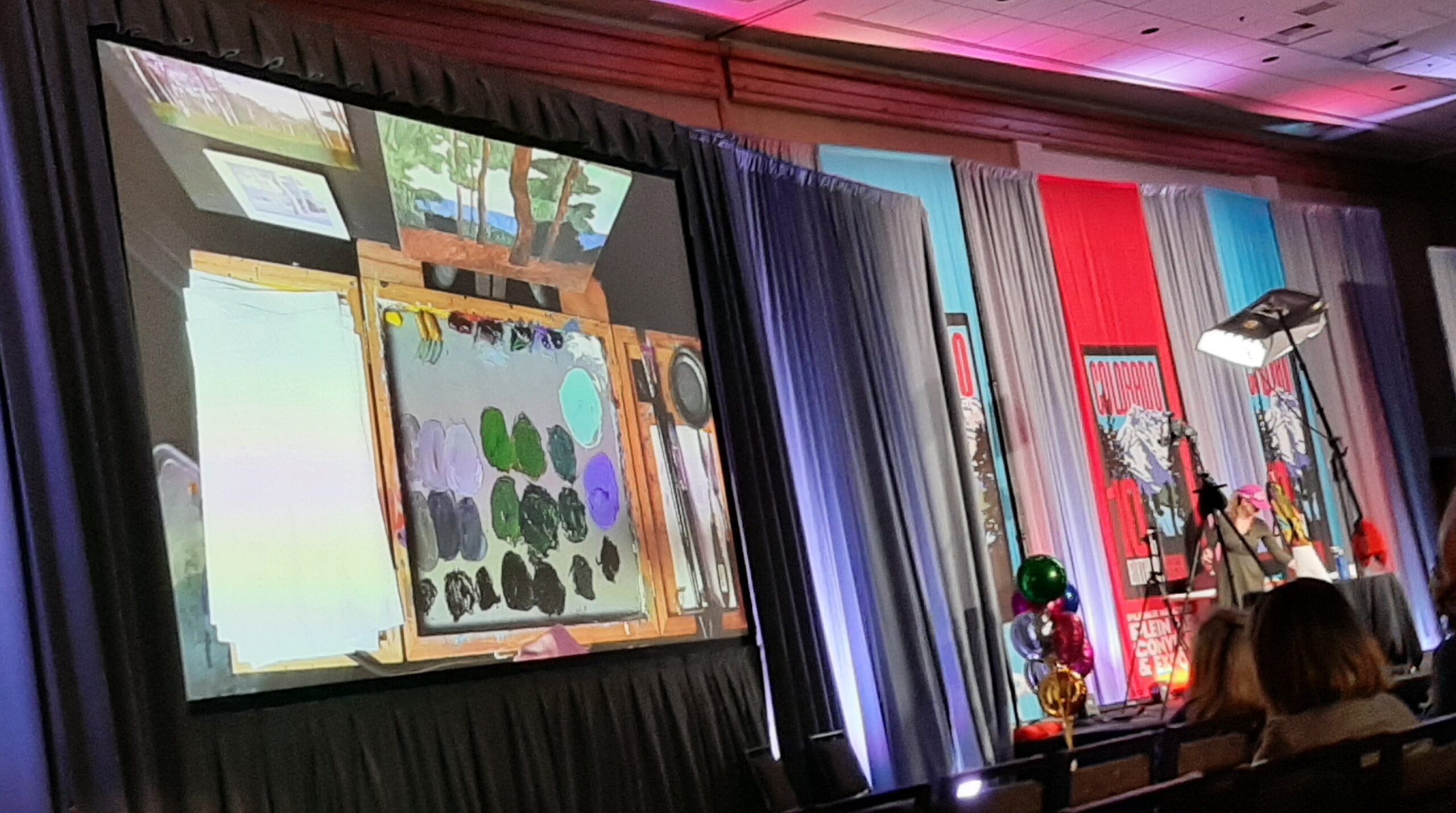
Pierre Guidetti, whose life work has revolved around the arts and art materials, pulled from his lectures to take us through the history of Paris in the 19th Century – the fine art capital of the world at the time – and the rise of Impressionism.
Steve Curry’s work has been featured in the United States Library of Congress and the Museum of Natural History. Today he will address color harmony, simplification, and tonal choices for painting trees.
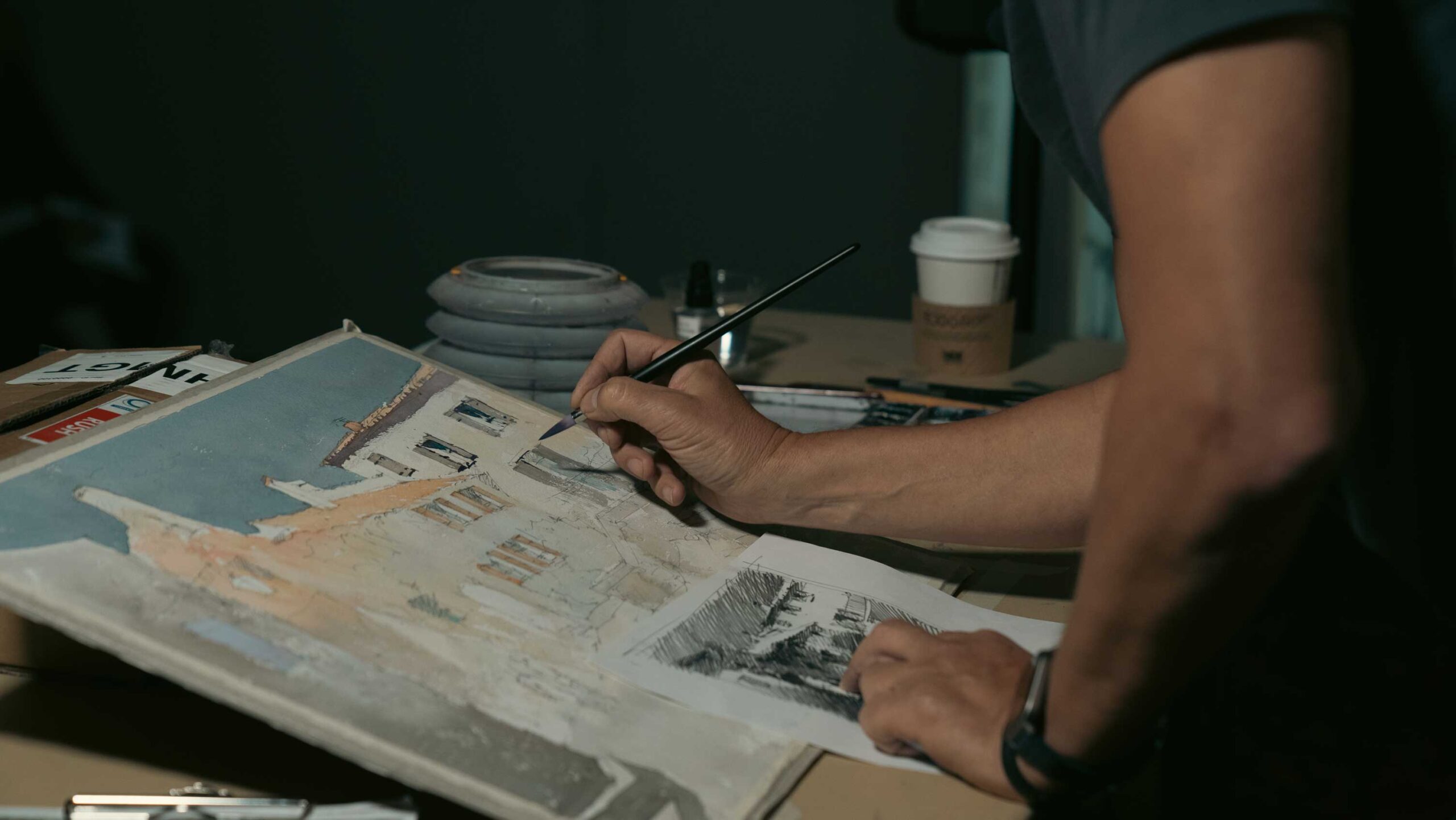
Then at lunchtime, we got to sit in on a live recording of the PleinAir Podcast with Eric Rhoads, who interviewed Haidee-Jo Summers. Stay tuned – in an upcoming Plein Air Today we’ll release the full episode.
Daniel Sprick is a hyper-realist painter who happens to live here in Denver. He holds art degrees from Mesa College and the University of Northern Colorado. In his main stage session, “Creating a Synthetic Landscape,” Daniel demonstrated how to alter value and temperature contrast to increase the illusion of distance and space, based on the 1935 “Synthetic Landscape” studio model by Maxfield Parrish.
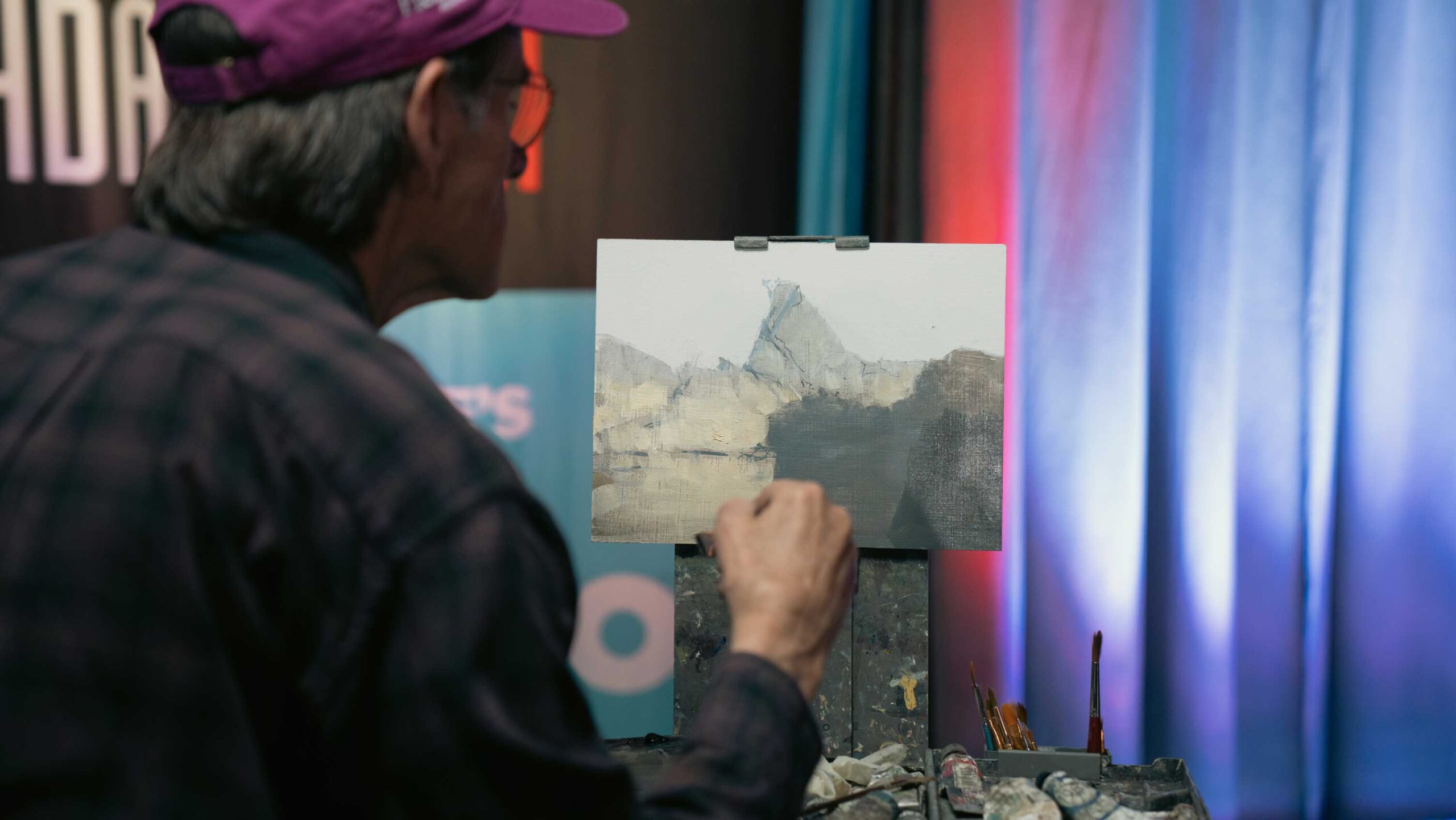
More Favorite Moments from PACE
Dan Marshall, a tonalist who loves to create backlit scenes, joined us for a watercolor demo that was loaded with extra tips, such as the reason he uses a small cup of water to rinse his brushes throughout a session. “The beauty of watercolor is that you can adjust it with different layers of color, starting with the connection you make between the colors of the ground and the colors of the sky that eventually connect.”
While mixing colors for the trees in his composition, he also explained, “I don’t paint with pretty colors, I paint with tones.”
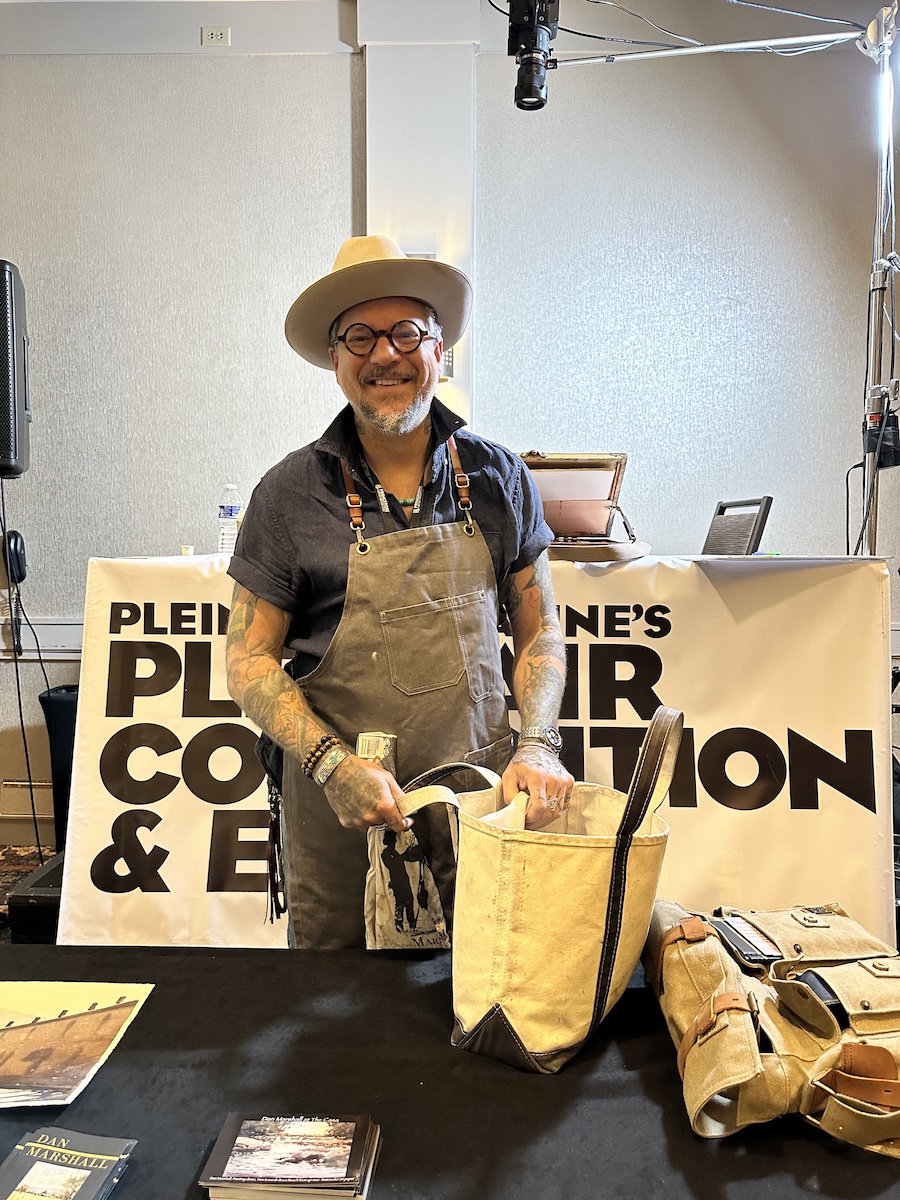
Does the idea of painting green keep you up at night? If you’re like many artists, you find painting green in a natural and not garish way is tricky. Kim Casebeer showed us how to realistically render greens in the landscape — in particular, to help show atmosphere and distance in a vista-type landscape. In Kim’s demo, she showed how to achieve variety of value, temperature, and chroma.
We watched Terri Ford demonstrate her “Thin to Thick, Dark to Light” principle, which, when combined with pure pigment, adds depth, texture, and WOW factor color.
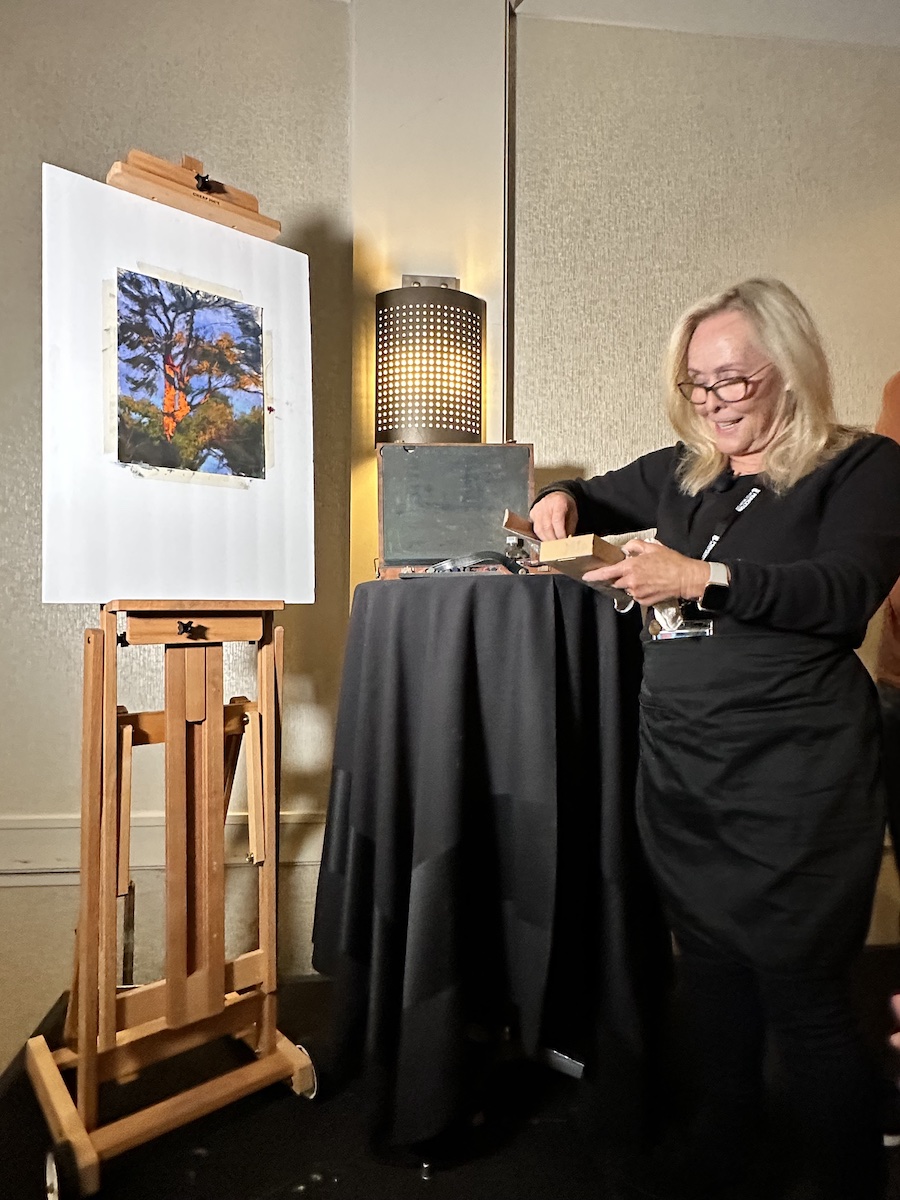
Veteran plein air artist Joe Gyurcsak created an effective compositional design using a single focal point in his painting. He shared tips on value, color, and brushwork during this impactful demonstration.
Capturing the movement of water is one of the most requested demos from students because there is water everywhere — lakes, rivers, oceans. Master pastelist Albert Handell shared his techniques, including a watercolor underpainting, finding the central point of interest, working from dark to light, and how to add atmosphere and distance to the landscape.
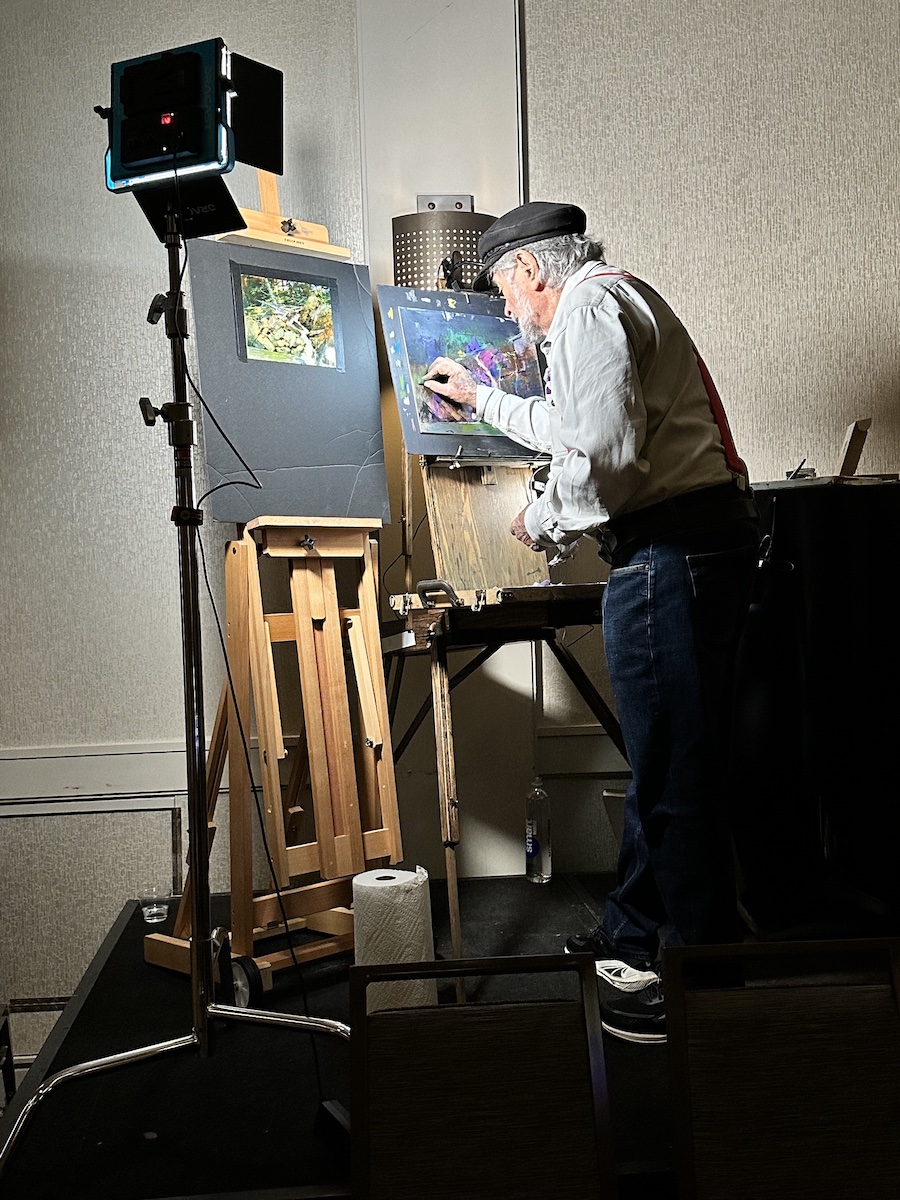
We all love plein air painting, but there may be times we choose to work from photo references or we’re forced to stay inside by inclement weather. Michele Usibelli gave a gouache demo where she discussed the elements that go into creating a successful painting, with a focus on bringing realistic color and light to one’s studio paintings.
Trees are one of the most common subjects in plein air landscape painting. Shuang Li’s session featured a Colorado landscape in watercolor. We learned her design approach to using trees as visual elements for a successful watercolor painting.
Nearly all artists use paper, but they often don’t know much about it, or why it works or doesn’t with different media. In “Paper Makes a Difference” with Joe Domeier, attendees learned why quality paper matters; all about sizing, weight, and deckles; and the features, benefits, and differences between the many types of paper fibers, including sustainable fibers, as well as the environmental impact of making paper, how fine art paper is made, and the history of making paper, including a 439-year-old mill.
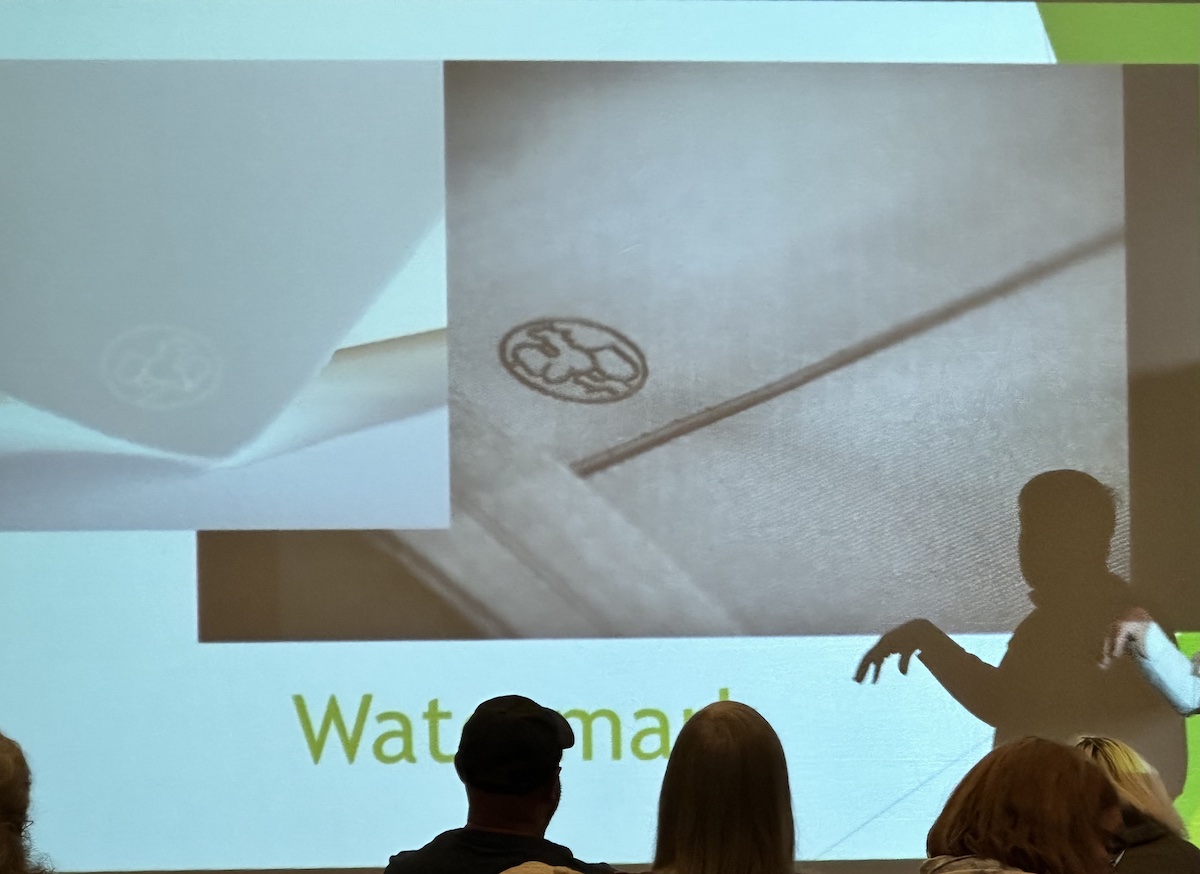
Before even picking up a brush, the artist must visualize the final look of the future painting, and stick to it. But keeping up with the imagination is not easy during a sometimes time-consuming process. Vladislav Yeliseyev noticed that the recently discovered “train” method was greatly helping him to keep the process alive, keeping the painting fresh and free from an illustrative approach, even in a studio environment – at PACE, he shared these methods with us.
The paintbrush is often favored because it allows artists to paint with precision and can be used to render expressive images. The palette knife is less exacting but can create explosions of intense color while helping push toward abstraction. We watched as Cynthia Rosen reinvented a Colorado landscape, illustrating the difference between the brush and the knife and breathing new energy and vibrancy into the scene.
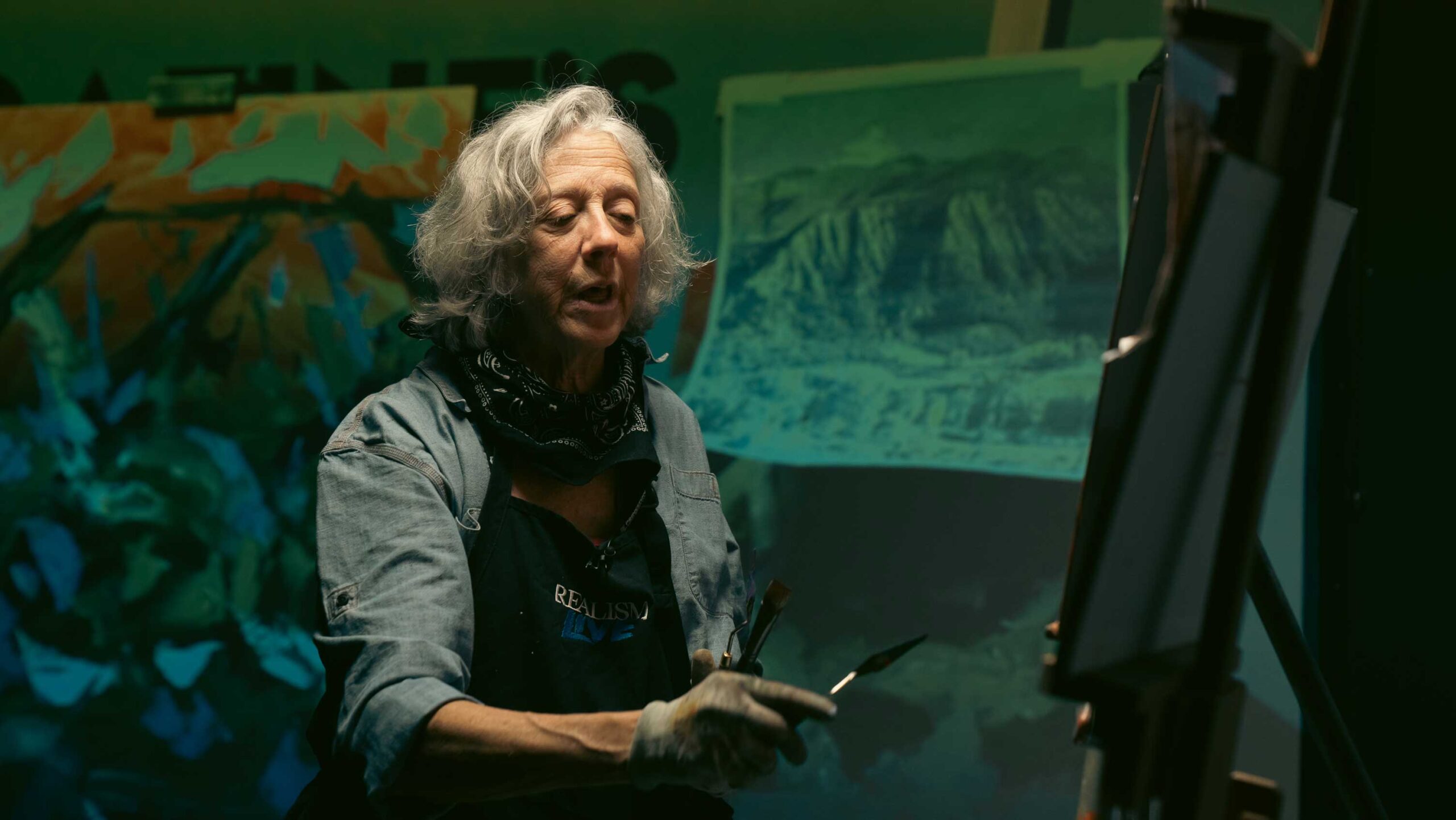
Idaho artist Lori McNee explored the beauty of painting a Rocky Mountain landscape. She started with a notan drawing and the simplest principles for creating a pleasing design. Using alla prima techniques, Lori demonstrated the power of deconstruction, which helps create a truly stunning work of art.
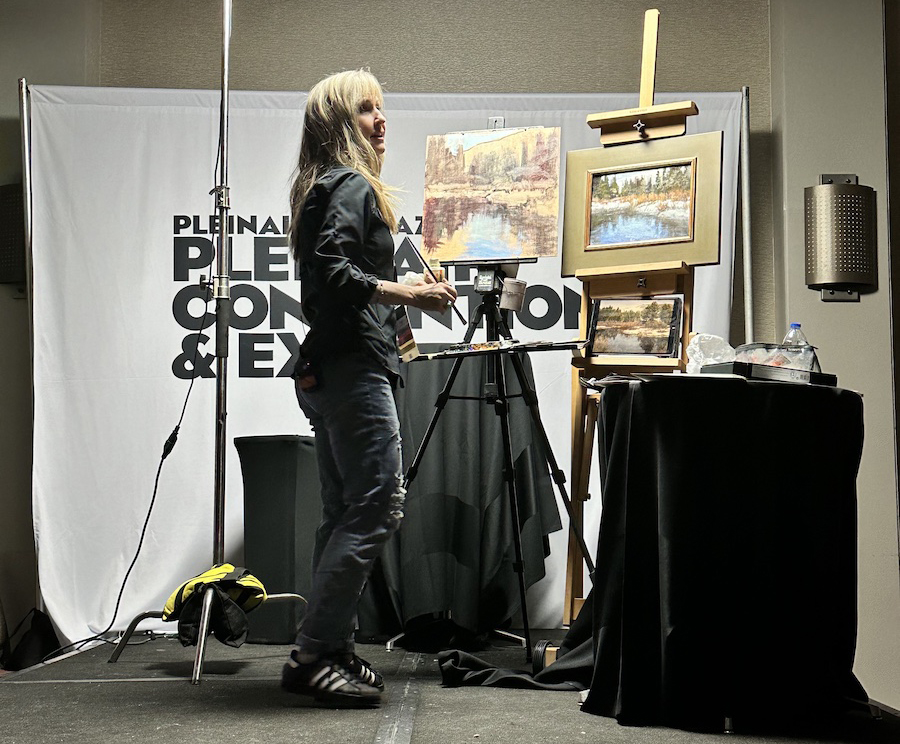
Robert Masla shared with us the “5 P’s of Painting.” Explaining with simple methods how to shut off the “critical doubting mind” and enter into “visual thinking,” he explained and demonstrated the importance of understanding intention throughout the process.
Colorado artist Anna Rose Bain gave a demo on a subject that’s a very popular pastime among Coloradans: rock climbing. Anna demonstrated how to compose a dynamic composition from the rugged rocks and morning light, and how to incorporate the figure into the scene. She explained in detail how to mix the colors so characteristic of the iconic places we’re exploring at PACE, including Eldorado Canyon State Park.
Adding a powerful sky to a painting can have a huge effect on the overall composition, as it can create a sense of mood, energy, and depth. PleinAir Salon-winning artist Debra Huse used bold, sweeping brushwork, angular design, and rich color to create a dynamic and engaging painting that draws the viewer’s attention, evoking an emotional response.
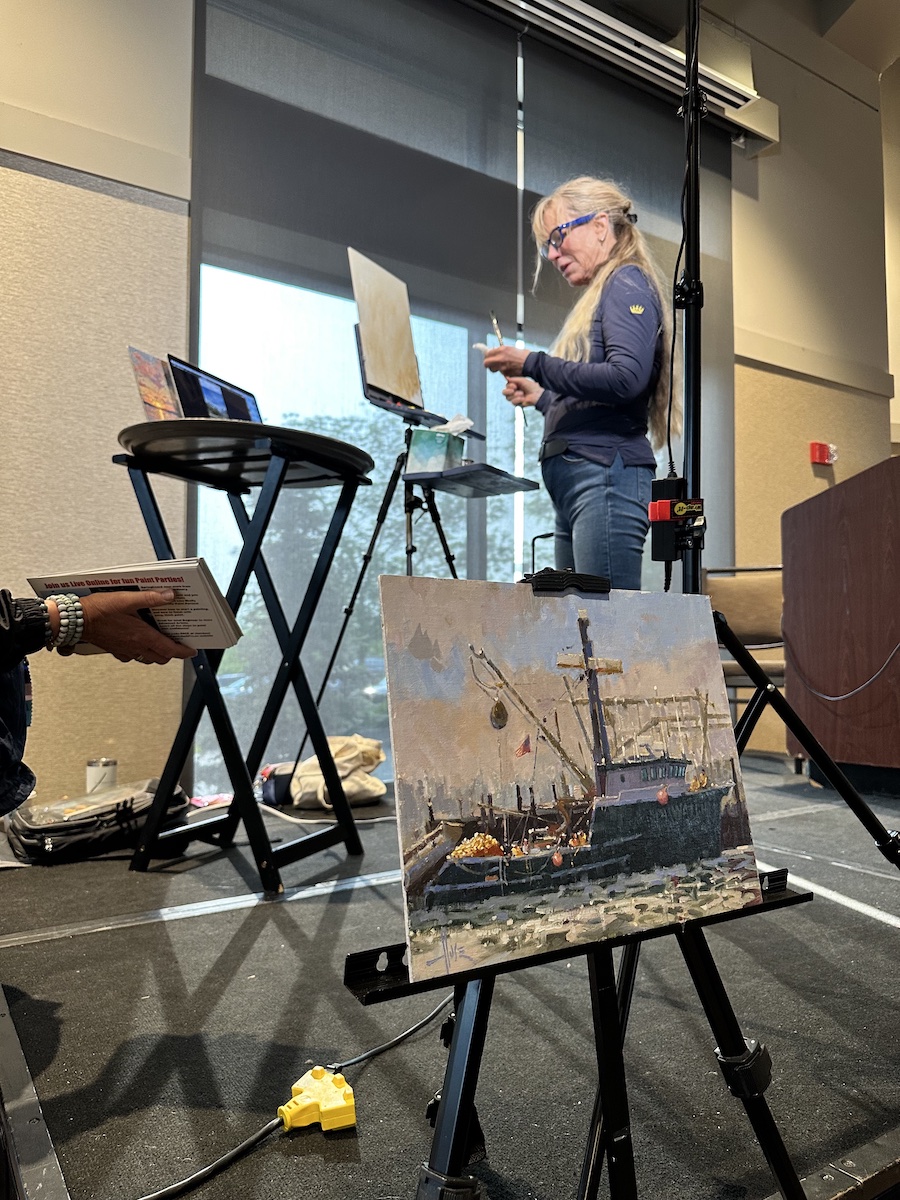
It’s easy to find ourselves in a routine of making tight little paintings that just don’t sing the way we wish they would. To break out, we need to gain confidence with tools and materials. Lon Brauer showed us how he approaches a painting: its construction, strategies, color palette, and new possibilities with mark-making, all with a bold and confident approach. “What I’m doing is not painting chickens,” he said, “but deriving them by working from negative spaces.”
Too often figures look as though they were cut out and glued to a landscape. Nancy Tankersley taught us how to manipulate edges and values to make the figure become a part of the landscape in a natural way.
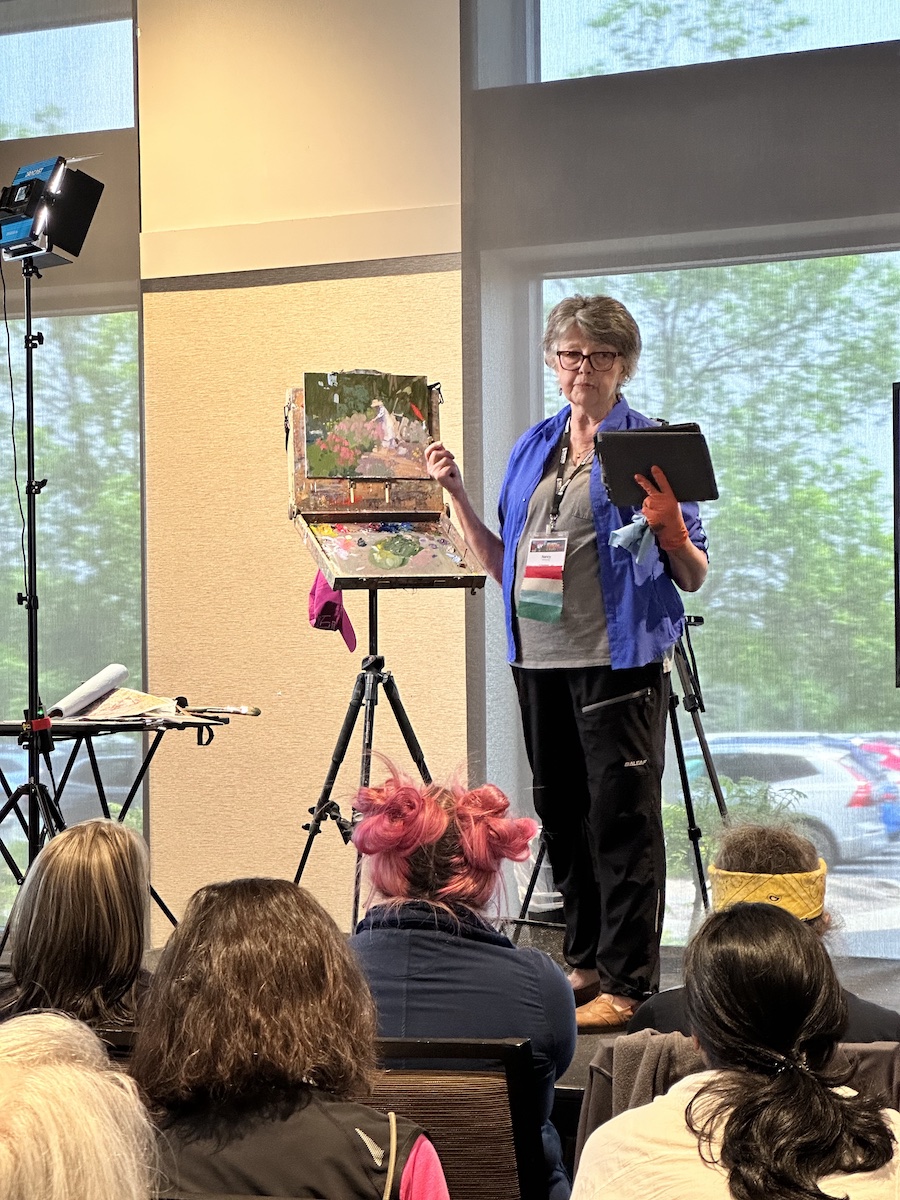
And toward the end of the night, Zufar Bikbov led an after-dark paint-out; it’s always worth giving this a try because in nocturnes, many “rules” are quite different from what we use in the daytime.
Wow! Does it seem possible that all of this (and more) happened in one day? It is possible at PACE! That’s one of the reasons it’s such an amazing event to attend – the amount of information is endless, and so when you join us next year, you’ll come away with a better painting practice and new friends that “get” what you love to do ~ simply paint outdoors.
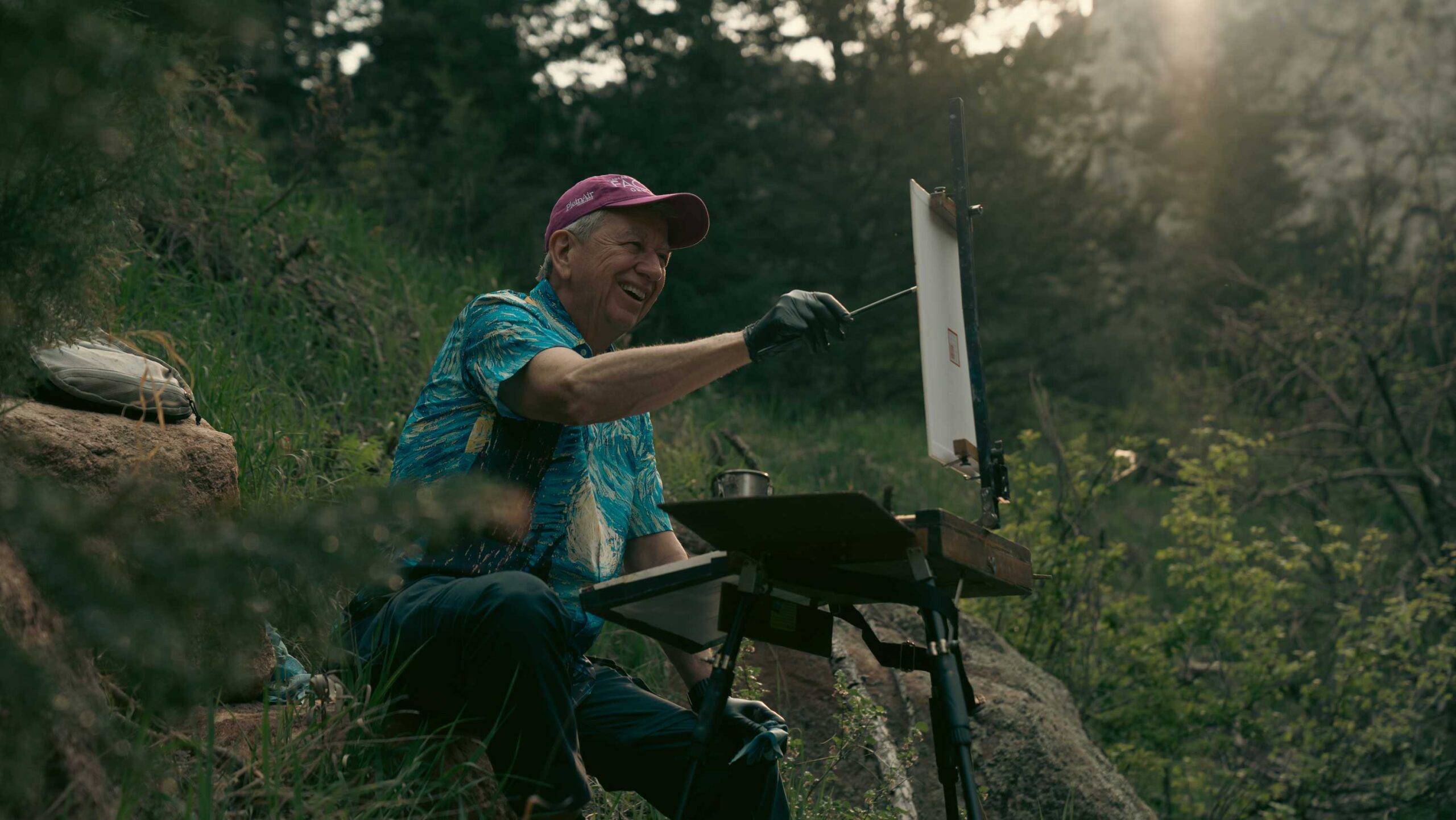
Visit PleinAirConvention.com now to either join us online and access the replays, or ~ available soon ~ you can sign up for PACE ‘24. I’ll see you there!

